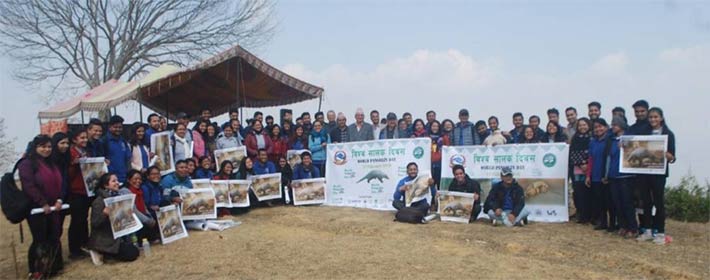Posted on 11th July 2018 by Media Relations
Every two years, Taronga extends its reach by awarding funding to other organisations and conservation projects around the world. Since launching the Field Conservation Grants in 2008, Taronga has provided funding and staff support to 70 vital programs. Projects that have benefited from a Taronga Field Conservation Grant have helped to regenerate habitats, mitigate human-wildlife conflict, reduce poaching and trafficking and create opportunities for people and wildlife to live side by side.
As one of Taronga’s legacy species, pangolins are close to our hearts. Found in Africa and Asia, they’re highly sought after for their scales and meat in the illegal wildlife trade, and hold the unfortunate title of the world’s most trafficked mammal.
Thankfully, organisations like the Small Mammal Conservation and Research Foundation (SMCRF) are working hard to conserve the critically endangered Chinese pangolin. Taronga is providing funding for a vital research and outreach program in Kathmandu Valley, Nepal, which is a hot spot for the elusive animals.
SMCRF recognises the importance of involving the local community in conservation, and uses a three-part strategy to highlight the importance of pangolins and engage citizen scientists to help save the species.

Capacity Building Workshops
Training workshops were conducted in three districts in Kathmandu Valley. The participants were representatives from Community Forest User Groups, District Forest Offices staff, women’s groups and youth groups. The workshops emphasised the ecological significance of pangolins, and included open discussions that highlighted the eco-tourism opportunities based around pangolin conservation. Participants were also taken into the field and trained on how to use research tools, including camera traps and GPS markers.
A Pangolin Conservation Team (PCT) of eight members has been formed in Kathmandu, and a team of six in Lalitpur. The skills they developed in the workshop will assist them in monitoring pangolin populations in their districts.
Field Surveys and Data Collection
Two out of three field sites have been surveyed so far. Sixty-three transect surveys showed 735 burrows, with 413 new burrows and 322 old burrows. Camera traps successfully located the Chinese pangolin at the Chandragiri site. Key threats identified included development, mining, logging and forest fires.
Interviews were also undertaken to gauge the willingness of local communities to establish and own rescue and rehabilitation centres for pangolins in their areas.
Community Outreach Programs
World Pangolin Day on 15 February brought together more than 170 people from both government and non-government organisations, as well as universities and local communities. Wearing pangolin t-shirts, they hiked through pangolin habitat and held an event centred around pangolin conservation. Speeches and a video presentation highlighted the importance of the species, and posters promoted important messaging and information about pangolins.
The program is at its halfway point, and has already delivered great results in raising the profile of the species, and training Nepalese people with key skills to monitor pangolins in their districts. With more research, surveys and school outreach programs to come in approaching months, it’s an exciting time of progression for pangolin conservation in the Kathmandu Valley.
In the near future, SMCRF also aims to open Pangolin Rescue and Rehabilitation Centres run by local communities, educate residents, and gather crucial data on pangolins in Kathmandu Valley.